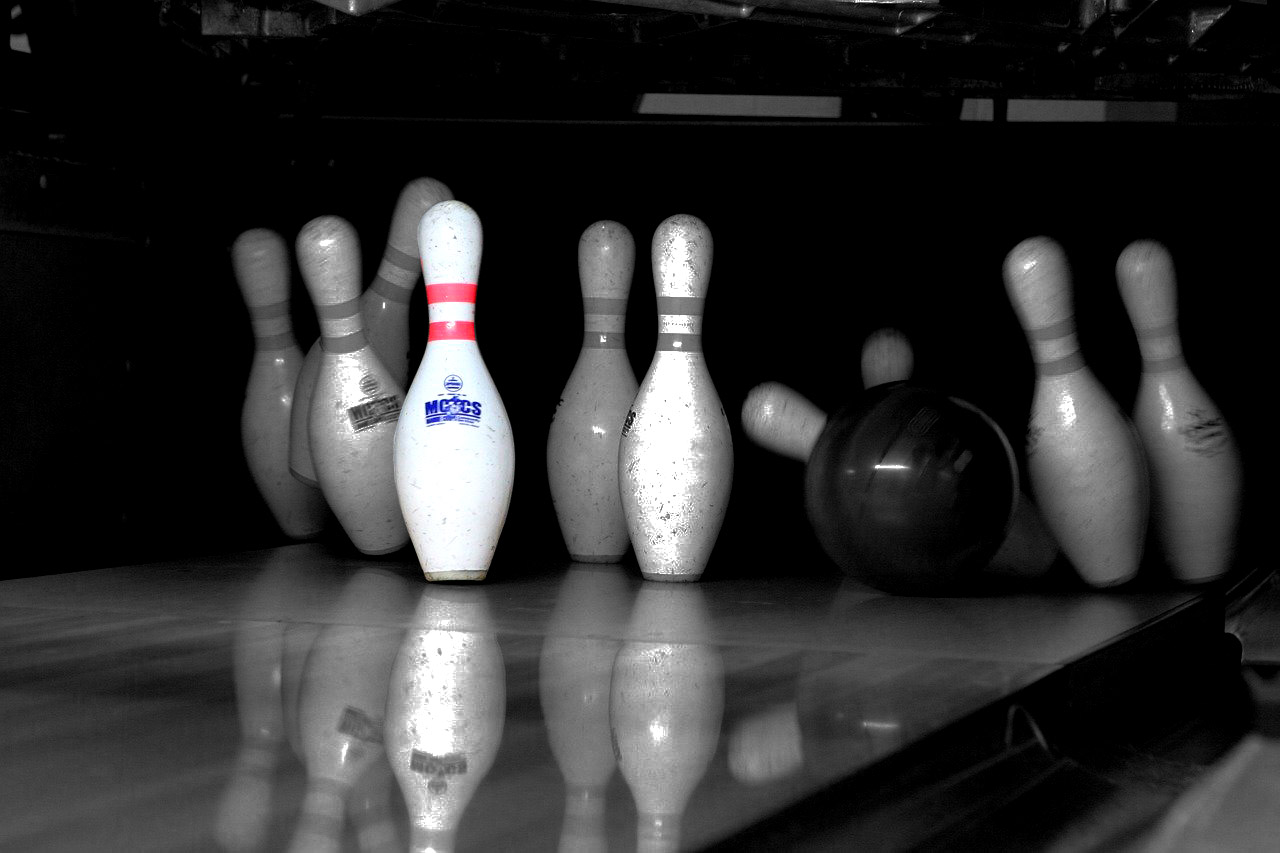Coupon excludes instant bonus items, hot deal items, and gift certificates.
How the Tenth Pin Changed Bowling Forever
How the Tenth Pin Changed Bowling Forever

Bowling is an immensely popular sport around the world; the 70 million yearly players make it the United States' most popular participatory sport, and many variations are played all around the world. But Bowling was once illegal in the United States! That is, until the tenth pin changed everything. The history of Bowling is interesting and convoluted, following the rise of civilization from a game of stones and sticks to the highly specialized game of tenpin bowling played today.
Outdoor Bowling
Nine-pin bowling was created by Monks in Germany, where it was known as kegelspiel around 300 AD. The player attempted to knock down nine pins (kegels) with a stone. In this version of the game, the kegel represented a temptation or sin, and so players who were able to knock the kegel down were perceived as more righteous.
The first written record of bowling comes from a ban by King Edward III in 1366. Apparently, his armies were playing the game known as "bowls" so frequently that it was becoming a serious distraction from their duties in the military. His later successor, King Henry VIII, amended the ban in 1511 to allow nobility to participate in the sport, but the ban itself was not lifted until 1845. During the years' in-between, bowls evolved into a predecessor of nine-pin bowling, which was called "skittles."
Skittles was typically played outside inns on smooth patches of ground. Skittles consisted of nine wooden pins and wooden balls. The balls were tossed at the pins in an effort to knock down as many as possible, and one point was earned per pin. A smaller, tabletop version was later devised to allow the game to be played within inns and pubs. This early version of nine-pin continued to live on among the aristocratic classes, played on Estate Lawns.
Early Indoor Bowling
Bowling migrated to America in the 1600s through European immigrants. Washington Irving tipped his hat to the game in his popular short story "Rip Van Winkle", in which the protagonist is woken up by the sound of "nine pins" being bowled over. In 1840, the first indoor bowling alley, Knickerbockers of New York city, was built. Bowling experienced a surge of popularity in the United States during the 1850s, and indoor bowling halls sprang up across the country, predominately in areas with large German populations. Rules for the sport became standardized in 1895 through the formation of the American Bowling Congress (ABC), which later merged into the United States Bowling Congress. With the addition of these new regulations, the 1900s saw bowling lanes grow in churches, firehouses, and private clubs.
The Tenth Pin
In the early 19th century, bowling alleys were primarily owned by Bars and Pubs. A culture of crime and gambling became associated with it, and eventually, Bowling gained a poor reputation. In 1841, Connecticut banned ownership of nine-pin lanes in an attempt to curb gambling and crime. To get around the law, players simply added one more pin, which nullified the ban and the modern game was born. There have been few changes to the rules of the sport since then.
Modern Advancements
However, there have been many introductions to the sport that have changed the game forever. The first rubber bowling ball entered the game in 1905, and was immediately preferred to the hard wooden balls that had been used up to that point. In 1914, bowling balls were upgraded to rubber mineralite. The next evolution took place in the 1970s with the discovery of polyester. Urethane balls did surface in the 1980s, but today, most bowling balls have an outer cover of resin.
Until the 1950s, pins were reset by hand. Gottfried Schmidt invented the first automatic pinsetter in 1946, and that invention helped make the game more timely and efficient. Bowling greats like Don Carter, voted the Greatest Bowler of All-Time in 1970, helped make bowling a popular sport, especially through televised tournaments. Programs like "Jackpot Bowling" and "Make That Spare" helped elevate bowling to a new level of stardom. A bowling lane was even installed in the White House in 1947, and has been enjoyed by White House staff and presidents alike. The popularity of bowling has slightly declined since its golden age in the 1950s and 1960s, but over 100 million people still enjoy the sport today. Bowling has steadily lost is reputation as a drinking and gambling game, and is now thought of as a family friendly-affair.
Bowling alleys now often include an arcade and food facilities to actively market bowling as a family activity and like many modernized games, bowling is now available in virtual formats as well as in traditional bowling alleys. The Nintendo Wii offers bowling as a video game, but online versions can be found on the internet as well. While some might enjoy bowling more with a remote control rather than with a ball, it remains a popular sport worldwide.















